
By Juliette Kellow, Registered Dietitian
Continued from Part 1 (keeping food cool) and Part 2 (prepping food) of our sustainable kitchen mini blog series, here Juliette Kellow delves into climate friendly cooking tips.
Cooking food requires fuel and this can have a major impact on household energy bills and greenhouse gases (GHGs). Quite simply, the less electricity used, the lower the carbon footprint. Sandwiches, wraps and salads are popular no-cook choices but there are plenty of other ways to reduce fuel use by replacing cooked or heated foods with no-cook options that are just as nutritious and tasty. For example:

Of course, many foods need to be cooked to make them palatable and safe to eat. But what we cook, how we cook it, and the appliance we use to cook it all affect the amount of energy used.
Big energy savings can be made by choosing foods and ingredients that cook quickly. This is where canned and frozen foods are great choices. They require little cooking, plus there’s no waste and they have a long shelf life. Couscous and noodles just require boiling water from the kettle and they’re ready to eat. Egg dishes – boiled, scrambled, poached, fried and omelettes – are ready in minutes. Stir fries and fajitas cook quickly. Pasta or rice with veg cooked in the same pan then mixed with tinned fish is a quick-cook option. Plus ingredients like tofu, Quorn© and canned beans, chickpeas and lentils also cook more quickly than meat, adding to their climate-friendly credentials.
Next, it’s important to consider how foods are cooked. There’s very little research looking at domestic cooking methods and their impact on GHG emissions, but research published in the journal Nature has provided some answers. The researchers started by looking at the carbon footprint of a range of foods before cooking, then looked at how cooking increased this. Overall, the researchers found home cooking accounts for 6 to 61% of total emissions associated with specific foods. However, this isn’t the full story. The precooked carbon footprint varies significantly between these foods, so while the % cooking increases for plants might seem high compared with those for animal products, the latter have a much higher carbon footprint to start with. Ultimately, even when plants are cooked, they still have a much lower carbon footprint than animal products.
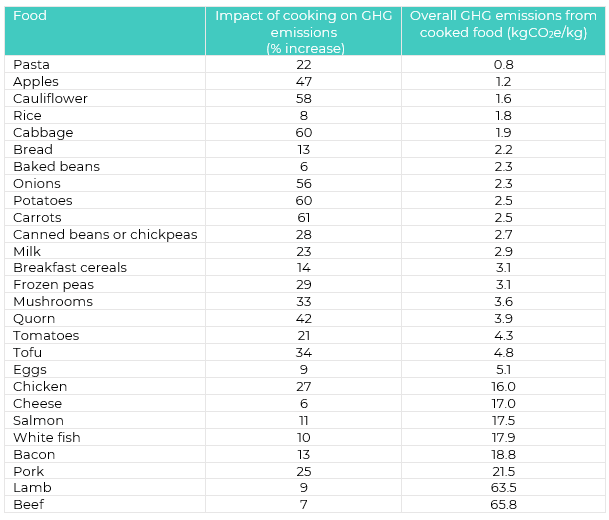
The researchers also looked at GHG emissions for different cooking methods for different foods. In general, roasting had the greatest impact, while microwaving had the least.
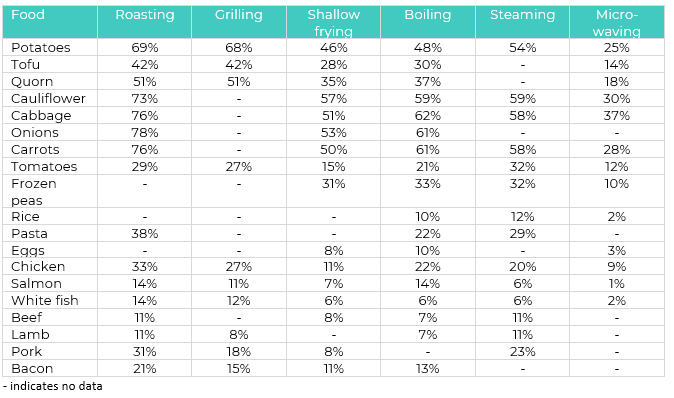
It’s also important to consider the amount of energy each appliance uses and the amount of time it’s used for. The calculation to estimate how much energy in kilowatt hours (kWh) each appliance uses is:
The power rating is typically given in Watts (W) on the appliance label or manual and needs to be divided by 1000 to give kilowatts (kW).
This is where certain appliances can be beneficial. Even though a slow cooker may be on for six hours, it has a very low power rating so uses less electricity than an oven, which is on for an hour but has a higher power rating. Similarly, air fryers and microwaves tend to use less power and cook food more quickly than an oven so overall, they use less electricity.
For a review of electricity use, cost and quality of cooking a roast chicken, chips, cake, soup, steamed vegetables and jacket potatoes with different appliances see this recent Which? review.
Typical fuel use, cost and GHG emissions of kitchen appliances
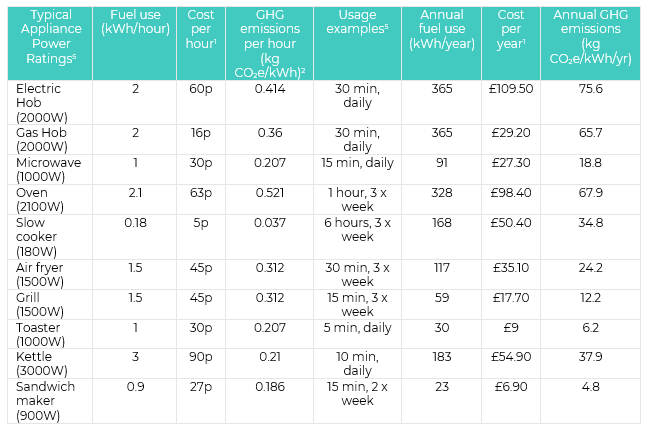
Pass on these tips to clients, too, to help reduce fuel when cooking…
- Keep the oven and hob clean – they use more energy when dirty. Clean oven glass also means food can be checked without opening the door, which causes heat to escape.
- Maximise oven efficiency – there’s no need to preheat the oven for foods when there’s no impact on safety or quality caused by a temperature change – think jacket potatoes. Similarly, turn the oven (and hob) off a few minutes before the end of cooking – the residual heat will continue to cook food. Make sure the whole oven is used, too, by cooking several dishes together.
- Use a steamer – it cooks food quickly and allows several foods to be cooked together in separate baskets, reducing hob usage. Plus, fewer water-soluble vitamins are lost with steaming than boiling as there’s no direct contact with water. For example, 100g steamed broccoli contains 60mg vitamin C, compared with 44mg in boiled.
- Cooking food in a microwave oven means shorter cooking times and considerable electricity and money savings. Using a microwave oven for 15 minutes uses a quarter of the electricity of using the hob for 30 minutes (see chart above). Plus food often retains more nutrients. One study found microwaved carrots retained 81% of vitamin C and 63% of beta-carotene, while boiled carrots kept just 45% vitamin C and 13% beta carotene.
- Don’t overcook food – it goes hand-in-hand with lengthier cooking times and higher temperatures, which use more energy. Plus overcooking may make food less healthy. For example, mushy veg lose water-soluble vitamins; charred meat may contain cancer-causing chemicals; and soggy pasta has a higher glycaemic index than firm pasta making it less filling.
- Match pan size to the amount of food being cooked – big pans take longer to heat up, which uses more energy, so if only small amounts are being cooked, use a small pan. Use lids, too – they keep heat in so food cooks more quickly and you can turn down the temperature, which means you use less energy overall.
- Turn off electrical appliances when they’re not being used – anything with a light or digital display such as ovens, microwave ovens, kettles, extractor fans and coffee machines all use electricity so switch them off at the plug socket.
Energy, financial and emission savings by changing cooking habits
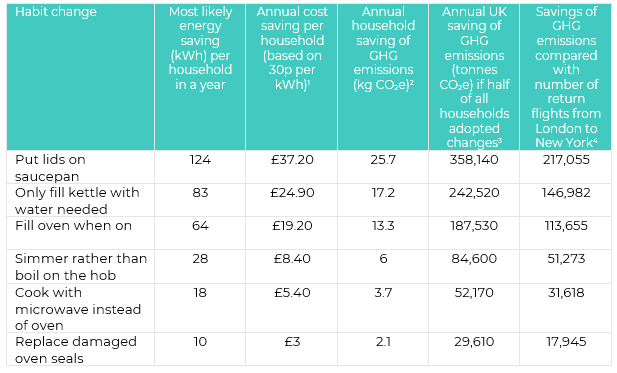
Let us know if you enjoyed Part 3 of the mini blog series; and do look out for the next week’s post…
This blog was peer reviewed by the MyNutriWeb Nutrition and Dietetic team 18/09/2023.
YOU MAY ALSO BE INTERESTED IN:
A Sustainable Kitchen – Keeping Food Cool

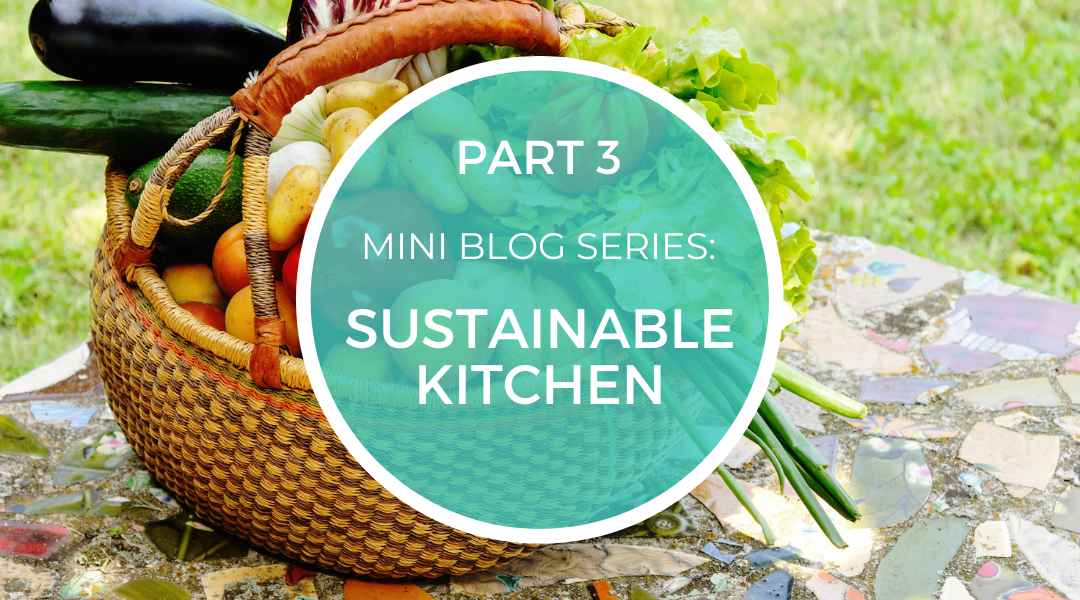





The climate friendly solution is swapping out the cheese for a plant based sandwich of some description, not worrying about the minimal energy of cooking the cheese sandwich. Please stop promoting animal agriculture with “climate friendly” articles.
Thank you for your comment to which we agree. In context, the author as part of this series has previously indicated that swapping animal proteins for plant proteins will provide one of the biggest gains for human and planetary health. In this follow on article she is highlighting how further changes can be gained by also considering cooking prep and methods and is highlighting the gains from those methods alone. We hope this clarifies.